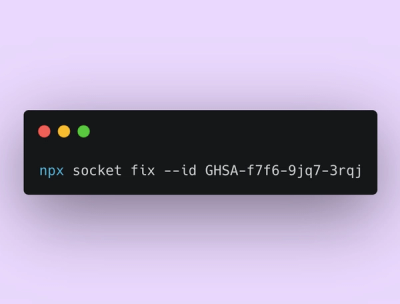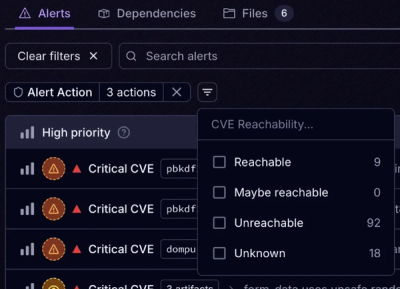
Product
Announcing Socket Fix 2.0
Socket Fix 2.0 brings targeted CVE remediation, smarter upgrade planning, and broader ecosystem support to help developers get to zero alerts.
This module provides standard "HTTP proxy" logic. You can script your own server
using the proxy server API. Be sure to take a look at the "Examples" section
below.
There is also a companion proxy(1) CLI tool, which spawns an HTTP(s) proxy
server with the specified options.
You could think of proxy(1) as similar to some of the other popular open
source HTTP proxy software:
A basic HTTP(s) server with all the default options. All requests are allowed. CONNECT HTTP method works as well.
import * as http from 'http';
import { createProxy } from 'proxy';
const server = createProxy(http.createServer());
server.listen(3128, () => {
var port = server.address().port;
console.log('HTTP(s) proxy server listening on port %d', port);
});
The proxy(1) CLI tool can be used to spawn HTTP(s) proxy server instances with
various options.
Pass the -p/--port option to with a port number to specify a TCP port to
bind to. Defaults to 3128 if none is specified.
$ proxy --port 8080
Proxy-Authenticate commandPass the -a/--authenticate switch with a command to execute when the client
Proxy-Authorization header is given. This command determines whether or not the
request is authorized based on the "exit code" of the command.
The relevant request authentication information is passed in as
PROXY_AUTH_USERNAME, PROXY_AUTH_PASSWORD and PROXY_AUTH_SCHEME environment
variables.
For example, to authorize "Basic" authentication with username "foo" and password "bar":
$ proxy --authenticate 'if \
[ "$PROXY_AUTH_USERNAME" = "foo" ] && \
[ "$PROXY_AUTH_PASSWORD" = "bar" ]; \
then exit 0; \
fi; \
exit 1;'
Pass the -l/--local-address argument with an IP address of the network
interface to send the outgoing requests through. It is the equivalent of setting
a localAddress field in the options when calling http.request().
$ proxy --local-address 192.168.0.10
FAQs
An HTTP proxy written with Node.js (think Squid)
The npm package proxy receives a total of 74,823 weekly downloads. As such, proxy popularity was classified as popular.
We found that proxy demonstrated a not healthy version release cadence and project activity because the last version was released a year ago. It has 0 open source maintainers collaborating on the project.
Did you know?

Socket for GitHub automatically highlights issues in each pull request and monitors the health of all your open source dependencies. Discover the contents of your packages and block harmful activity before you install or update your dependencies.

Product
Socket Fix 2.0 brings targeted CVE remediation, smarter upgrade planning, and broader ecosystem support to help developers get to zero alerts.

Security News
Socket CEO Feross Aboukhadijeh joins Risky Business Weekly to unpack recent npm phishing attacks, their limited impact, and the risks if attackers get smarter.

Product
Socket’s new Tier 1 Reachability filters out up to 80% of irrelevant CVEs, so security teams can focus on the vulnerabilities that matter.